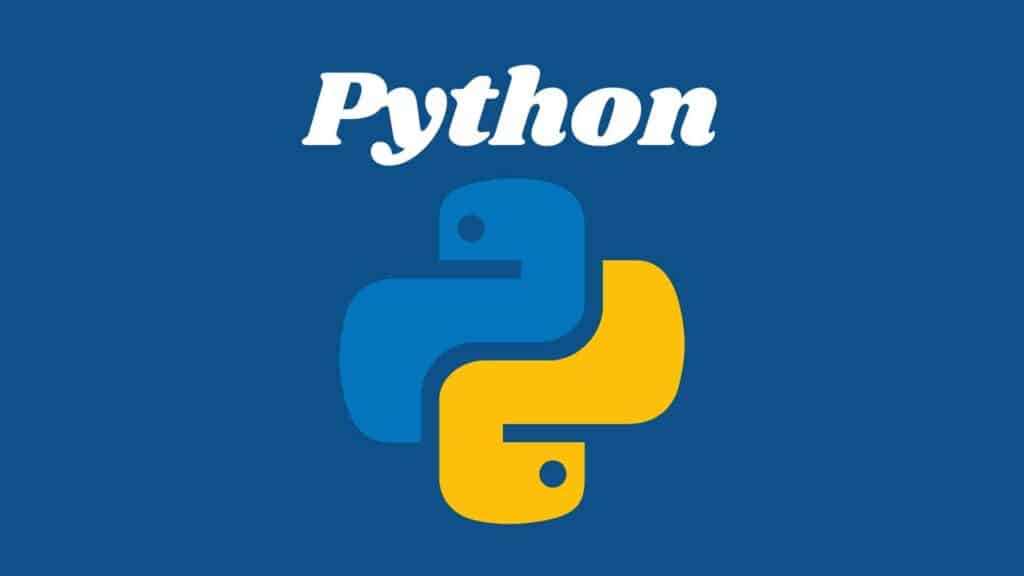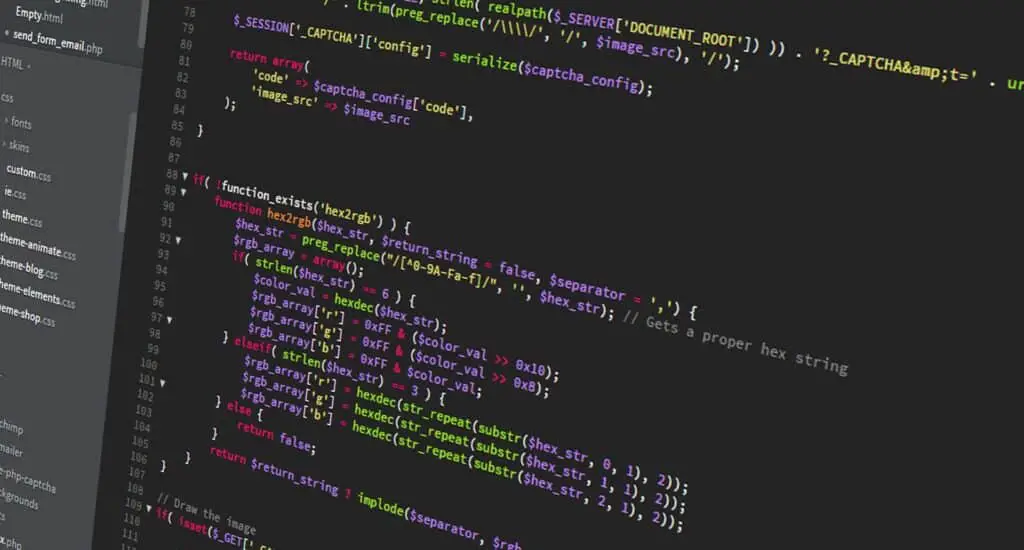This post may contain paid links to my personal recommendations that help to support the site!
You’ve heard about how hot the data science industry is, but you’re curious to know if coding is required for data science work. Look no further; here’s the short answer:
Coding is required for data science. Data science requires the use of coding languages to explore, clean, analyze and present data. Coding languages like Python and R are also used in machine learning in data science. However, the requirement for coding in data science varies across job functions and industries.
Coding is one of the common requirements in data science, but the amount and extent of coding really vary across various factors. Read on to learn more about the coding requirements in data science!
Why is Coding Required in Data Science?
Based on what I’ve experienced, coding really does help out a lot in a data science career.
Let’s have a deeper look into each of the 5 reasons why.
1. Data transformation

By having the ability to code, you can unlock the entire world of flexible data transformation. Allow me to explain.
Data within data science is typically messy and unorganized. To handle such dirty and messy data, you’ll need a very flexible way to put them into the structure you need.
Without any coding, you’ll likely take a long time cleaning it up in Excel (which is really tedious!).
However, through the power of coding and programming, packages and libraries from programming languages can help improve your workflow tremendously!
Some of these examples include:
These are among the many tools used for data manipulation of data sets. They mostly only require basic programming skills to use such libraries for data science.
2. Greater control over data
As I’ve already mentioned, coding gives you more flexibility, and with that comes greater control over your data.
The use of coding languages can allow you to build logic into your data transformation. This means that you’ll be able to create functions based on specific conditions that aren’t as easy to create manually in Excel.
Coding languages are versatile because, through the use of those functions, you can have more control over how your data looks like.
You can even go one step further and automate all of them by compiling them into a script. By building such automation, you would save more time on boring stuff like data mining.
This would give you more time to explore the fun stuff in data work like predictive analytics and artificial intelligence.
Here’s a perfect video example of automating Excel work using Python!
3. Version control
If you’ve had to work with other data scientists or analysts on a project, you’re more than likely to understand why version control is so important.
Having knowledge of coding makes things much simpler since the Python or R scripts can be shared using version control.
Let’s have a look at how version control works.
Version control is a system to track changes made to a project over time. The system allows files to be worked on by several people, who can make changes to them. All changes made to the file are recorded and saved to allow better control and prevention of unwanted changes.
In fact, it’s one of the more under-appreciated data science skills!
Here’s a simple video explaining version control using Git by one of my favorite YouTubers, Ken Jee!
Git is the most common language used in data science for version control. Git allows you to store your files in a repository, where files are tracked and controlled. Any changes made to the files are called commits.
Without going too much into the details, a coding language like Git makes data science work more structured and controlled.
4. Machine learning libraries
Another major reason you’ll want to be using coding when doing data science is that a majority of the most popular machine learning libraries are found in Python and R.
Here are some common machine-learning libraries:
Data science involves so much work with machine learning modeling, and this can only be done through coding languages.
Without at least some knowledge of these languages, it can be hard to find replacements for such powerful machine-learning libraries.
Therefore, coding is required in data science for their machine learning libraries.
5. Statistical packages
Data science requires a lot of statistical analysis to make sense of data.
To be more efficient in data science work, tools are typically used instead of manual calculations. And coding is one of the best tools a data scientist has when it comes to statistical testing. Here’s why:
Coding languages like Python and R have statistical packages that cover a large variety of tests for different needs.
For example, a function can be used to replace manual calculations by simply feeding it a data set!
Some examples of statistical packages in data science include:
Those shown above are common packages in the Python coding language. R is a native statistical language and doesn’t need any additional packages to conduct statistical testing.
Data analytics relies heavily on programming skills since these open-source packages are only available through coding.
This just means that a data scientist is pretty much HEAVILY reliant on coding to get things done!
However, this doesn’t mean that you’ll require a whole lot of coding knowledge. Let’s look at how much coding is needed:
How Much Coding is Needed for Data Science?
A moderate level of coding is needed for data science. Data science only needs enough coding knowledge for data transformation and analysis, or machine learning packages for advanced users. A high level of coding similar to software engineering is not needed for data science. However, this may vary across positions.
What Programming Languages are Used in Data Science?
Each data science language is crucial and ideally, you should have at least some knowledge in each of them.
Let’s have a deeper look into each of the languages:
1. Python

Python is the most popular programming language used in data science. Although, some might think that Python is used in most areas across data science except the scientific research industry.
Python has a powerful collection of libraries in machine learning, data analysis, and data visualization. Python also has extensive use with other uses in software engineering.
Here are some examples of Python usage in data science:
- Getting data from an API to create a dataset using the requests library
- Querying non-relational data from MongoDB using the PyMongo library
- Performing data analysis and visualization using the matplotlib library
2. R

R is a statistical coding language that is commonly used among data scientists within the scientific field to analyze data.
Although it is less popular Python, it still has a really good selection of data tools, stored in the form of packages. My favorite has got to be the ggplot 2 visualization package!
Here are some examples of R usage in data science:
- Transforming data using the dplyr package
- Visualizing data using the ggplot2 package
- Machine learning using the caret package
3. Structured Query Language (SQL)

Structured Query Language is the go-to language for querying from relational databases. Most data scientists and data analysts use SQL to select the data they need for analysis.
Here are some examples of SQL usage in data science:
- Writing an SQL query from a MySQL database
- Feeding data into an ETL pipeline using SQL
4. Javascript

Javascript is the least common of the scripting languages used in data science. However, I included it because of its use in data visualizations and its extensive use in software engineering.
Javascript is known for the D3.js library, where data can be presented in beautiful charts. This is much more dynamic than the data visualization libraries found in Python and R.
5. Git

As mentioned previously, Git is an essential language to add to your data science toolbox for its use in version control. With proper version control, all scripts written in the languages mentioned above can be tracked and traced quickly, if bugs were to occur.
What Jobs in Data Science Require Coding?
Data scientists, data analysts, data engineers, and BI analysts require coding in data science. Data science requires moderate use of coding languages across all functions, from machine learning by data scientists, to visualizations by data analysts, to ETL by data engineers and business analysis by BI analysts.
A good data science team should have a combination of data professionals who work on different areas of the data science process.
1. Data Scientists
The most common position among data science jobs is the data scientist. Data scientists typically dive deep into data to extract insights through machine learning and artificial intelligence.
Data scientists use coding for their daily tasks, such as data exploration, transformation, analysis, and machine learning. Without the use of code, it would be an impossible task for them to carry out their work efficiently!
However, there are some no-code tools used by data scientists, and they allow these tasks to be done with no coding knowledge. Although, this doesn’t mean that coding isn’t required.
In fact, data scientists use a combination of both coding languages as well as no-code tools!
2. Data Analysts
Data analysts work on the end of the data pipeline and work with data to analyze and present insight to the various aspects of a company. This means that they’re very much involved in coding out any data transformations and visualization.
Some of the most common languages used by data analysts are SQL, Python, and R.
3. Data Engineers

Data engineers handle data right from the source – they clean and structure data in large amounts to pass to the data analysts. Being a highly technical role, a data engineer needs to be proficient in several essential programming languages.
Some of the most common languages used in data engineering are Python, Java, and SQL.
4. Business Intelligence Analysts
Business intelligence analysts focus on delivering key business insights through business analysis. They typically have to examine a business by looking at the relevant data and it’s usually done through SQL.
Some of the most common languages used by BI analysts are SQL and Python.
Can You Become a Data Scientist Without Coding?
A career seeker cannot become a data scientist without coding. Data scientists are involved with deep analytics work requiring essential machine learning libraries from coding languages. Without knowledge of coding, data scientists will find difficulty in solving problems and working with software engineers.
How Can You Start Learning Coding for Data Science?
Start learning coding for data science through doing data science projects. These projects should be accompanied by a reference guidebook to speed up the learning process and also by a well-structured online course to keep motivation high. Participate in data science hackathons and learn the essential data tools there.
Here’s my recommendation if I were to start learning data science from scratch:
Guidebooks:
Why guidebooks? Having a handy physical copy of a book allows you to focus on the coding within your computer without switching windows like in digital copies. You won’t regret this, trust me.
For learning R, I’d go with this guidebook “Learning R“. It covers all essential functions within R, which is suitable for beginners.
For learning Python, I’d go with this Python for Data Analysis as a resource book.
For learning SQL, the SQL: The Ultimate Beginners Guide: Learn SQL Today is a good starter guide for beginners.
For learning Javascript, go with the Data Visualization with Python and JavaScript to get started.
For learning Git, this book ‘GIT: The Ultimate Guide for Beginners: Learn Git Version Control” is a good way to start!
Online Courses:
Though costlier, online courses can prove to give you that boost of motivation, especially when things start to get really demotivating.
With the pressure of having put in some monetary investment, I was motivated to finish the courses and receive certificates. This helped my learning tremendously and I believe it would for you too!
For learning R, get started with an introductory course through this specialization, Data Science: Foundations using R Specialization.
For learning Python, you’ll be good with either an introduction course on Datacamp “Introduction to Python” or on this “Learning Python for Data Analysis and Visualization” course.
For learning SQL, get started with the Introduction to SQL course on Datacamp for a structured course for beginners.
For Learning Javascript, although I haven’t really learned it myself, I found that the Javascript Specialization on Coursera to be well-structured.
As for learning Git, you won’t need any online courses since you’ll be better off learning it for free on YouTube since it is a relatively simpler language.
Related Questions
Is Data Science Hard?
Data science is hard. Learning data science requires strong logical and analytical thinking for solving data science problems. Data science also requires constant learning of the latest data technology. However, the level of difficulty varies depending on the job within data science – some jobs are easier than others.
Are Programming Languages Required for Data Science?
Programming languages are required for data science. Data science is highly technical within the computing and technology field. Without knowledge of programming languages, data science work would be highly inefficient. However, some areas within data science can be covered by no-code tools.
Similar to a technical field like computer science. Having the knowledge of technical programming skills can set you apart.
Is R Required for Data Science?
R is not required for data science in most cases. R is used specifically in statistical research for its powerful statistical tools and data visualization packages. Therefore, due to its niche applications, R is not a common requirement for data science. However, requirements for R may vary depending on employers.
Is Python Required for Data Science?
Python is required for data sciencei most cases. Python is a widely used programming language in data science for its machine learning capabilities and access to data through APIs and is necessary for most data science roles. However, requirements for Python in data science may vary depending on employer needs.
How Long Does it Take to Learn Python?
It takes an average of 4-6 weeks to learn Python without programming experience. For those with programming experience, it takes only about 3 weeks. This timeline will vary depending on programming experience, learning time commitment, having the right resources, digital literacy, and exposure to coding projects.
Does a Data Analyst Require Coding?
A data analyst requires coding for most cases. Data analysts use coding languages for data transformation, analysis, and visualization. Coding is also required for data analysts to automate their work. However, this may vary across employers, depending on the needs of their respective data analyst positions for coding.
Is it Possible to Become a Data Analyst Without Coding?
It is possible to become a data analyst without coding. Data analysts have job functions across multiple functions, of which some do not require much coding. Therefore, some employers may hire data analysts without coding knowledge. However, having coding knowledge may greatly improve hiring chances of job applicants.
Final Thoughts
Alright, so that’s all I have to share about coding within the data science field. In summary, data science does require coding but there are so many different roles available and I’m sure there would be some positions that would not require as much coding knowledge.
Nonetheless, having coding knowledge is crucial so start learning today!
My Favorite Learning Resources:
My Recommended Learning Platforms!
| Learning Platform | What’s Good About the Platform? | |
|---|---|---|
| 1 | Coursera | Certificates are offered by popular learning institutes and companies like Google & IBM |
| 2 | DataCamp | Comes with an integrated coding platform, great for beginners! |
| 3 | Pluralsight | Strong focus on data skills, taught by industry experts |
| 4 | Stratascratch | Learn faster by doing real interview coding practices for data science |
| 5 | Udacity | High-quality, comprehensive courses |
My Recommended Online Courses + Books!
| Topic | Online Courses | Books | |
|---|---|---|---|
| 1 | Data Analytics | Google Data Analytics Professional Certificate | – |
| 2 | Data Science | IBM Data Science Professional Certificate | – |
| 3 | Excel | Excel Skills for Business Specialization | – |
| 4 | Python | Python for Everybody Specialization | Python for Data Analysis |
| 5 | SQL | Introduction to SQL | SQL: The Ultimate Beginners Guide: Learn SQL Today |
| 6 | Tableau | Data Visualization with Tableau | Practical Tableau |
| 7 | Power BI | Getting Started with Power BI Desktop | Beginning Microsoft Power BI |
| 8 | R Programming | Data Science: Foundations using R Specialization | Learning R |
| 9 | Data Visualization | – | Big Book of Dashboards |


